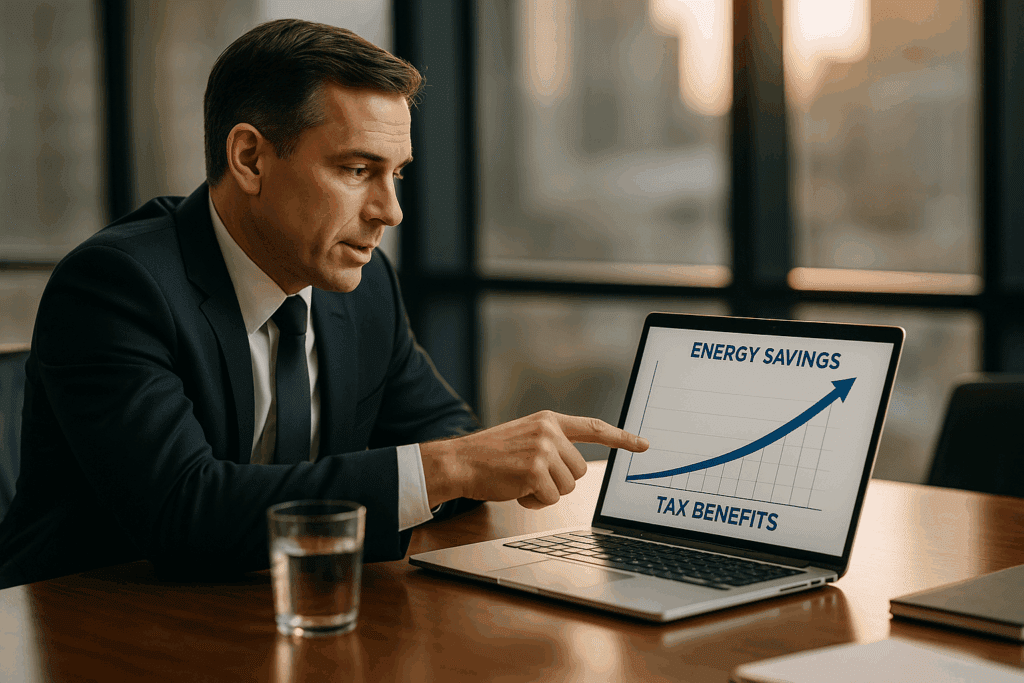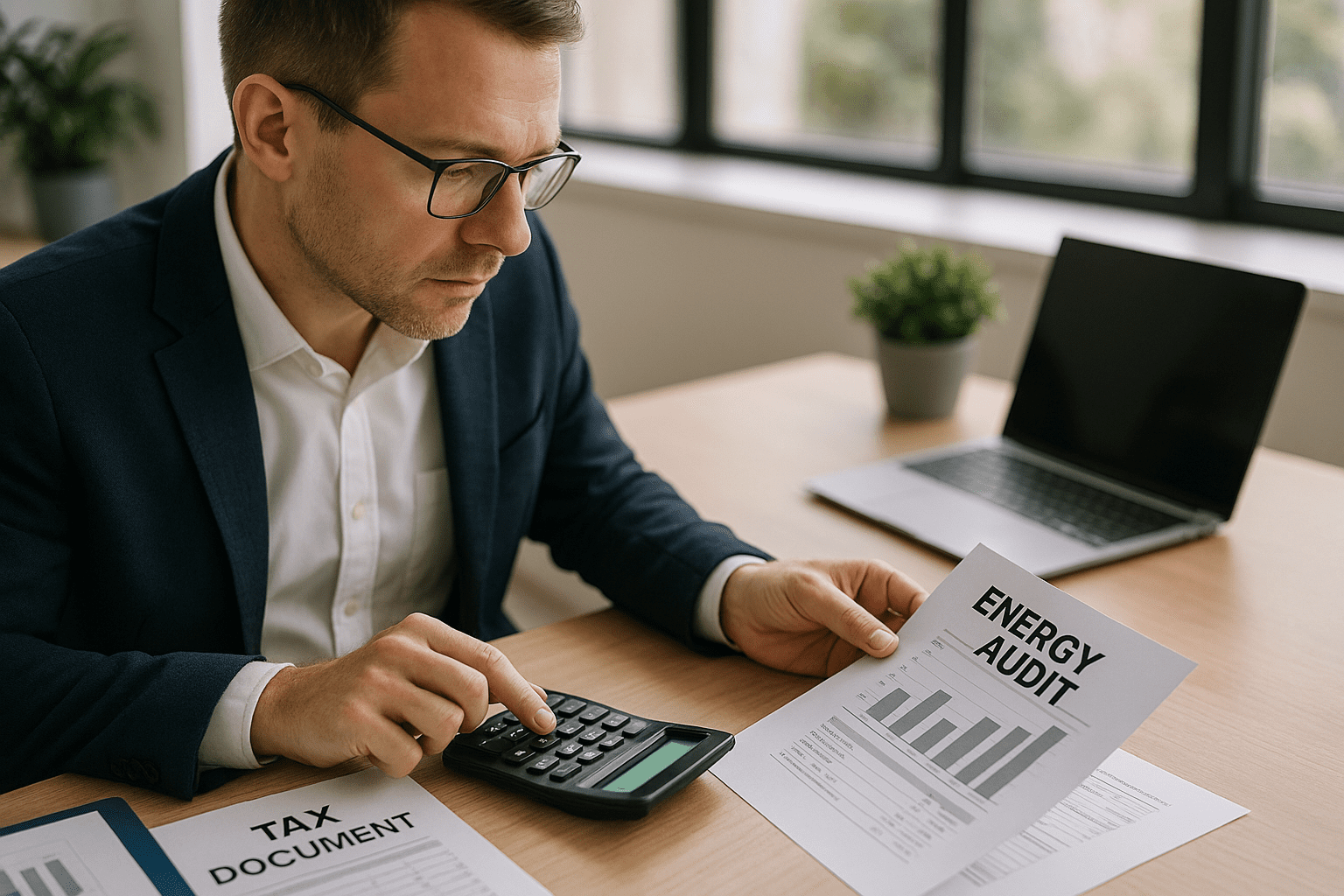Did you know the latest tax incentives could turn your commercial energy audit from a cost into an investment? Let’s dive into the details that every property manager should know. In a climate of escalating energy costs and stringent environmental regulations, understanding and implementing energy conservation measures isn’t just a regulatory compliance matter; it’s a strategic financial decision. With recent changes in energy efficiency legislation, commercial property owners and managers have a unique opportunity to capitalize on these shifts, enhancing their operations while gaining financial advantages.
Navigating the landscape of energy policy and HVAC energy efficiency can be complex, but the incentives designed to promote sustainable building practices offer a clear path to not only compliance but also cost savings and improved asset value. These tax incentives are tailored to encourage commercial property owners to invest in energy audits and subsequent upgrades. However, despite their availability, many property managers remain unaware of how to effectively leverage these benefits, leaving significant money on the table.
This blog aims to bridge that knowledge gap. By exploring the intricacies of energy efficiency legislation and the specific tax breaks that support commercial HVAC systems and other energy-saving improvements, we can help you transform what might seem like mundane upgrades into valuable investments. Stay tuned for actionable insights, and don’t forget to sign up for our newsletter to keep abreast of the latest developments and opportunities in energy efficiency for commercial properties.
Understanding the Tax Incentive Landscape

Navigating the complexities of tax incentives for energy efficiency can turn a daunting financial outlook into an opportunity for substantial savings. Here’s a detailed look at the key incentives available:
- Federal Tax Credits: The federal government offers a variety of tax credits for commercial properties that implement energy-saving upgrades. These credits can cover a significant portion of the cost for installing energy-efficient windows, high-quality insulation, and certain types of HVAC systems that meet Energy Star standards. By reducing the tax liability dollar for dollar, these credits directly decrease the amount of tax you owe, enhancing the return on your investment in energy efficiency.
- Depreciation Benefits: Under the Modified Accelerated Cost Recovery System (MACRS), commercial property owners can accelerate the depreciation on new or existing energy-efficient equipment. This means you can deduct a greater amount of the asset’s cost from your taxes in the early years of its life, providing a faster return on investment. This benefit is particularly attractive as it reduces the taxable income, thus lowering your tax burden while encouraging upgrades that might otherwise seem financially unfeasible.
- State-Specific Incentives: Beyond federal incentives, many states offer their own unique incentives to encourage energy efficiency in commercial properties. These can include additional tax credits, cash rebates, or reduced utility rates for businesses that implement energy-saving measures. Since these incentives vary widely by state, it’s crucial for property managers to research and understand the specific opportunities available in their region. This not only maximizes potential savings but also aligns with regional energy conservation goals.
Conducting Your Energy Audit: What to Focus On
A comprehensive energy audit is the cornerstone of understanding where and how to apply improvements for maximum benefit. Here’s what to focus on during the audit:
- HVAC Performance: Given that HVAC systems account for a large portion of energy use in commercial buildings, assessing their efficiency is critical. Look for outdated systems or those that operate continuously without modulating. Upgrading to energy-efficient systems or retrofitting existing systems with advanced controls can reduce energy consumption dramatically, making a significant impact on both your energy bills and eligibility for tax incentives.
- Lighting Systems: Lighting upgrades are among the easiest and most cost-effective energy improvements you can make. Transitioning to LED lighting, which uses at least 75% less energy and lasts 25 times longer than incandescent lighting, not only cuts costs but also often qualifies for specific incentives. Additionally, consider installing advanced lighting controls such as timers, motion detectors, or daylight sensors to further enhance energy savings.
- Building Envelope: Examining the building envelope is crucial for identifying air leaks and insulation gaps. Effective insulation and airtight sealing can substantially reduce heating and cooling demands. Pay special attention to windows, doors, roofs, and walls. Upgrades in these areas can qualify for additional rebates and improve the overall thermal efficiency of your building.
Implementing Upgrades and Claiming Benefits
With the audit complete, the next phase is implementation and documentation—key steps to ensuring you receive every available tax benefit:
- Documentation: Detailed records are essential. Keep all receipts, invoices, and contracts related to your energy efficiency upgrades. These documents should clearly state the nature of the improvements and their expected impact on energy use.
- Certification: For certain tax incentives, you may need to prove that the installed equipment or upgrades meet specific energy efficiency criteria. This often requires certification from a recognized third party. Ensure that you comply with these requirements to qualify for the incentives.
- Consulting with Experts: To navigate this complex landscape, it’s wise to consult with tax professionals or energy consultants who specialize in commercial real estate and energy policy. These experts can provide invaluable guidance on maximizing your tax benefits, ensuring compliance with all regulations, and strategically planning for future upgrades.
By meticulously focusing on these areas, you not only ensure compliance and optimize operational efficiencies but also position your property to take full advantage of financial incentives, turning energy costs into investment opportunities.
Seizing the Opportunity: Next Steps for Energy-Smart Management

As we wrap up our exploration into leveraging tax incentives for commercial energy audits, it’s clear that the journey toward energy efficiency is not just a pathway to cost savings—it’s a strategic move towards sustainable and financially sound property management. By embracing the opportunities laid out in today’s discussion, you can transform the way your property consumes energy, enjoys new upgrades, and ultimately, competes in the commercial real estate market.
Now is the time to act. Harness the insights from your energy audit to not only improve your property’s energy performance but to also take full advantage of the financial incentives available. Remember, every step you take towards energy efficiency not only contributes to a healthier planet but also improves your bottom line through savings and incentives. It’s a win-win scenario that too few property managers fully exploit.
Don’t let this opportunity slip through your fingers. Sign up for our newsletter today to stay updated on the latest in energy efficiency legislation and incentives. Let us help you keep a pulse on new developments that can benefit your business. Follow our blog for ongoing insights and guidance, and consider booking a call with us to discuss how you can specifically benefit from the information we’ve shared. Your journey towards energy efficiency and enhanced profitability starts here—embrace it with the confidence that you are making an informed, strategic decision that future-proofs your investments.
Energy efficiency is not just about meeting standards, but setting them. Let’s set the bar high together.
VertPro.com offers tools and services to help property owners and managers improve building energy efficiency and meet regulatory standards. Whether you’re looking for instant pricing on energy audits, need support with benchmark compliance, or want to explore available building upgrade options, VertPro® provides user-friendly technology solutions to simplify the process. Their platform helps ensure adherence to over 60 Energy Benchmarking and Efficiency Laws across the country.

